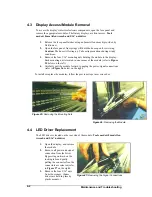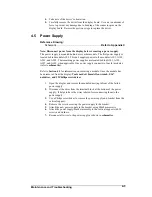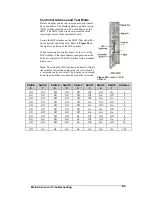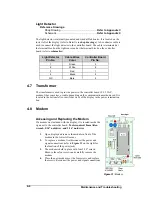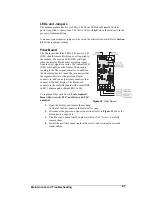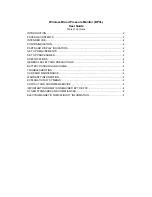
RS422
This cable is a 6-conductor shielded cable used to transmit an RS422 signal
(Daktronics part number W-1210). This unshielded cable consists of un-paired wires.
They should not be subjected to mechanical flexing after installation. This cable is
not
for direct burial and should have one of the following routings:
·
In dedicated metallic conduit
·
Inside buildings
-
if cable is not in conduit, keep away from interference
signals
With interference signals, such as power conductors, intercom, etc., typically a two-
foot separation is required.
Modem
The modem option will use a standard telephone cable routed through a conduit. The
local telephone company will need to assist in this installation.
Ask the telephone company which colors the TIP uses, and the RING for signal hook
up.
Note:
The telephone lines must be dedicated lines and
not
run through a switch
board/communications system.
Fiber Optic
This cable is a 4-fiber cable (Daktronics part number W-1376). Two fibers are used
for display communications and the other two are saved for spares. The cable may be
either direct burial or routed in conduit but it should not be subjected to mechanical
flexing.
Radio
The Server radio connected to the computer requires an 18-gauge six-conductor
cable (Daktronics part number W-1370). Four-conductors will be used for the signal
and two for power. These wires need to be in conduit when exposed to outdoor
conditions to the Server radio. The maximum distance from the J-box to the Server
radio is 1,000 feet (305.8 meters).
The Client radio at the display comes with cable that is rated for outdoor use and
does not need to be in conduit. The cable should be secured to the structure so it does
not come loose from the display.
Electrical Installation
3-6

























